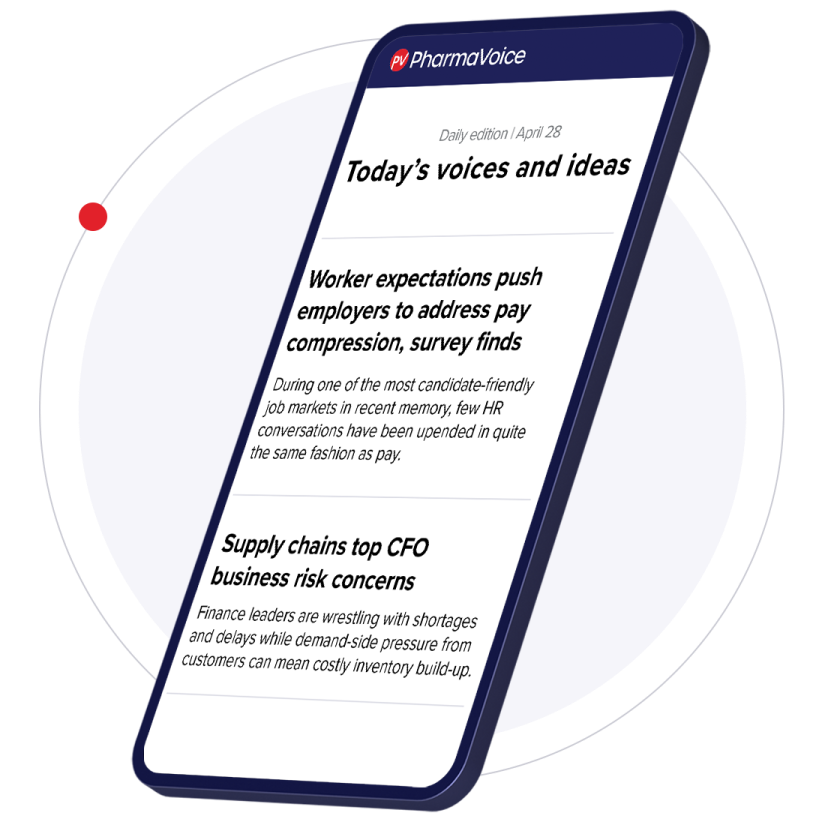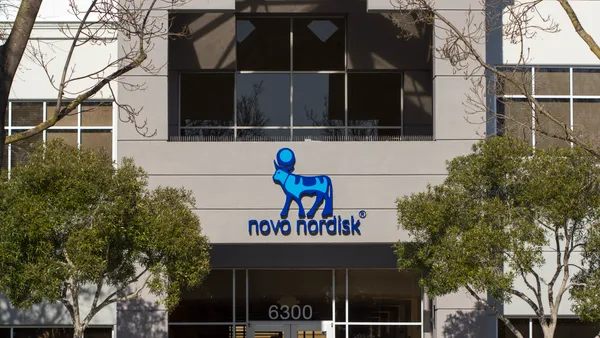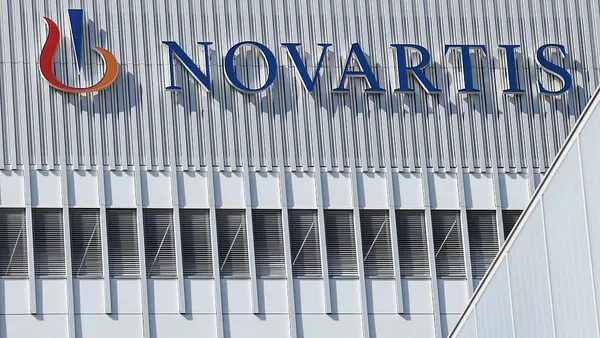46 J u n e 20 03 PharmaVOICE n the past two decades, the companies involved in this story have long since changed, casual ties of multiple mergers and acquisitions. But the genesis of DTC advertising can be traced back to Boots Pharmaceuticals, a small Europeanbased pharmaceutical company. While directtophysician ads appeared in print first for Boots Pharmaceuticals’ Rufen, a prescrip tion ibuprofen product, it was in 1983 that Boots’ executives decided that they required a big ger voice to take on a major competitor in the NSAID category — and the medium company executives wanted to use to voice their message was television. Thus in 1983 the first TV ad for a prescription drug aired. According to Liz Moench, who in 1983 was the product director who spearheaded the DTC initiative for Rufen, the company had a lot to gain and little to lose. By today’s standards the Rufen campaign may appear primitive in its creative execution, but Boots’ executives paved the way for DTC by taking on the FDA and a formidable and much larg er competitor — The Upjohn Co. — to have its brand message heard. “It may still be a little known fact today that ibuprofen was discovered and developed by Boots Pharmaceuticals and was sold in the United States under a nonexclusive license as Motrin by Upjohn,” Ms. Moench says. (Post 1983, Upjohn was acquired by Pharmacia, which in turn was recently acquired by Pfizer. Boots acquired Flint Laboratories in the late 1980s, and in the 1990s Boots Pharmaceuticals/Flint was purchased by Knoll Pharmaceuticals, which subsequently was acquired by Abbott Labs.) How 5/19 Changed the Industry Forever IN AN EXCLUSIVETO PHARMAVOICE,LIZ MOENCH,NOW PRESIDENT OF MEDICIGROUP INC., RELATES HER EXPERIENCE AS A PRODUCT DIRECTOR AT BOOTS PHARMACEUTICALS IN HELPING TO BRINGTHE FIRST DTCTVAD FOR A PRESCRIPTION PRODUCTTO THE MASSES. LIZ MOENCH these 20 years, those involved could never have foreseen the farreaching impact the first politically charged consumer campaign would have on pharmaceutical marketing today. May19,1983, changed the world of pharmaceutical marketing forever. But some 20 years later few pharmaceutical marketing executives know the relevance of this date. This was the day the industry’s first directtoconsumer advertising campaign premiered on television and in print. I 47 PharmaVOICE J u ne 20 03 VIEW on DTC In 1983, the American Medical Associa tion (AMA) predicted that the physician pop ulation would increase 89% between then and 2000. Prophetically, the Boots’ team predict ed that, at the same time, advertising to con sumers would increase. They thought DTC would be a way to hold down costs of increas ing salesforces to meet this physician growth. (Well, they were right on one count.) David VS. Goliath A “David and Goliath” situation motivat ed the Boots’ DTC campaign in 1983 as a way to compete for market share against Upjohn’s prescription ibuprofen product Motrin. “While Boots was a dominant player in the United Kingdom, in the United States the company was very small — with sales revenue of less than $100 million — and the company was virtually unknown, even though it was a multinational corporation,” Ms. Moench says. “Boots faced Goliath — Upjohn, a company that had overall annual sales exceeding $2 bil lion, of which $200 million was derived from ibuprofen alone. At the time, Motrin was ranked as the No. 1 nonsteroidal antiinflam matory drug (NSAID) on the market and the most prescribed drug in America.” According to Ms. Moench, the only way Boots could compete in an environment where budget and physician loyalty were in Upjohn’s favor — since prescribing physicians loyal to Upjohn considered Boots’ ibuprofen a generic (rather than the original) — was to use a novel marketing approach that would take the mes sage about the availability of the “original ibuprofen” directly to consumers. The Early Days In 1983, the Food and Drug Administra tion had no specific regulations governing DTC. At the same time, there were no FDA regulations prohibiting prescription drug adver tising to consumers because there had been no need. The rules for prescription drug ads were the same, regard less of what form the ad was — print, television, or radio — and those rules were specific to professional ads — direct to health profes sionals. Those rules required fairly detailed information about the side effects and precautions in the ads. “Boots applied the FDA regulations that existed for professional advertising to two con sumer ads — print and TV,” Ms. Moench recalls. “The newspaper ad contained full pre scribing information while the television ad included a brief summary.” According to industry sources, Boots’ TV ad for Rufen led, at least in large part, to a request by the FDA for a twoyear moratorium on consumer drug advertising, which lasted from 1983 to 1985. During that time, the FDA conducted “consumer exchange” meet ings around the country to further study the issue. And then it took the FDA more than a decade to issue a draft guidance that provided for more relaxed rules for broadcast drug ads. “Those ads bore little resemblance to the overthecounter painreliever TV commercials of the day,” Ms. Moench says. “When a meeting was held with CBS to get the network’s approval to air the commercial, the CBS execu tives laughed because they had never seen such a conservative advertisement. The commercial depicted a graysuited company CEO at a blackboard, his English accent reinforcing the image of a British gentleman giving a lecture.” According to Ms. Moench, the fullpage newspaper ad provided details about Rufen for the treatment of arthri tis, full prescribing information, and both newspaper and televi sion ads communicated a “switch” and a price benefit message direct ed exclusively to Motrin users. The ad content was as straightforward as its image: “If you have arthritis and your doctor has prescribed ibuprofen, the Number One prescription drug for symptomatic relief of arthritis, he will tell you that he can now pre scribe it under two brand names, Motrin and Rufen. While Motrin and Rufen are inter changeable and have the same uses, side effects, and contraindications, there is an important dif ference. Rufen can cost you considerably less.” The print ad went on to give some back ground about Boots and to explain that a Boots’ researcher discovered the drug. For the television ad, a caution was superimposed on the screen: “Do not use ibuprofen if aspirin or other antiarthritics cause a problem” and “Side effects: GI distress, dizziness, and rash.” According to Ms. Moench, as a relative newcomer to the U.S. market Boots’ interac tion with the FDA had been limited. As such, the company had not established a longterm track record with the agency. The company, with U.S. headquarters in Shreveport, La., hired regulatory and legal FDA counsel from the Washington, D.C. based law firm Kleinfield, Kaplan and Becker, and regulatory and legal guidance for the DTC campaign came primarily from Alan Kaplan, who had written FDA law. “A facetoface meeting was held with FDA officials, Boots’ legal counsel, Boots’ Boots’TV ad for Rufen led to a request by the FDA for a twoyear moratorium on consumerdrug advertising,which lasted from 1983 to 1985. 48 J un e 2 00 3 PharmaVOICE Madison Avenue advertising agencies such as Omnicom, Interpublic, and WPP have invested tens of millions of dollars in compa nies that perform clinicaldrug trials or recruit patients for clinical trials. Such involvement will lead to increased scrutiny and skepticism from legislators, the media, publishers, and the medical community. For this DTC extension to be successful, Ms. Moench says there are two issues. First there will be a need to separate recruitment advertising from directtoconsumer advertis ing. Second, the industry will need to learn to separate science from marketing. While many Madison Avenue executives view patient recruitment as a continuum of drug advertising, offering additional revenue opportunities, many may find the reality quite different. “Despite the obvious similarities, the objectives of recruitment advertising are very different from DTC advertising,” Ms. Moench says. “DTC is about volume — get ting as many consumers as possible to request the specific prescription product. If this approach were used for recruitment, study sites would be totally overloaded with patient referrals, the sites would be unable to screen patients, and the study would be doomed to failure. “Recruitment advertising requires more focus — targeted to specific populations with planned advertising response rates enabling study sites to handle patient referral and screening volume,” she says. “Recruitment advertising’s success is predicated on very detailed preplanning. This preplanning drives advertising plans, site support, retain ing potential participants from first contact to successful study completion. In essence, over all recruitment management needs to go beyond just advertising to be successful. “Looking back these 20 years, those involved never could have foreseen the far reaching impact the first politically charged consumer campaign would have on pharma ceutical marketing today,” Ms. Moench says. “Nor would anyone have predicted the influ ence of DTC in today’s marketing of clinical research studies. In the next 20 years, the industry will see more significant changes in the application of DTC.” F PharmaVoice welcomes comments about this article.Email us at [email protected]. VIEW on DTC President John Bryer, and myself,” Ms. Moench says. “The Boots team presented the television and print ads and was surprised by the FDA’s initial reaction. While the FDA acknowledged that its moratorium against DTC was not legally binding and that price advertising did not fall within its guidance, the agency nevertheless asked the Boots team not to proceed with its campaign.” Ms. Moench says Boots officials decided they had no option but to go ahead with the ads for several reasons: the Cable Health Net work (now Lifetime Cable Network) had given its approval to air prescription product ads on its channel; the FDA would probably take some time in its deliberations about pre scription drug advertising to consumers; and more importantly, Boots’ patent on ibuprofen was due to expire two years later in 1985. According to Ms. Moench, Boots decided to be proactive and arranged to have a major arti cle in the marketing section of The Wall Street Journal announce to the industry and the FDA the onset of the Rufen DTC advertisement. “The FDA responded the afternoon that the article appeared by issuing a regulatory letter to Boots,” she recalls. “The letter stated that the Boots’ ads had violated regulations by not adequately presenting information on side effects, contraindications, and effectiveness, and that the ads were false and misleading because they claimed that Motrin and Rufen were interchangeable, when, in fact, Motrin was available in two other dosage forms. “Boots resubmitted a revised ad that speci fied 400mg tablets and omitted all references to arthritis and to the `Number One’ claims,” she says. “The object was not to fight or ques tion the FDA’s wisdom, but to save the pro gram. The FDA approved the revised version and Boots’ ads returned to the air.” Rufen was wellsuited to be the test for consumer advertising, according to Ms. Moench, because it was a product that did not require complex explanations about usage, dosage, and contraindications and it was a product in the chronic use area that had been on the market and clinically proven over a number of years. DTC’s New Frontiers The DTC pendulum has swung signifi cantly in the past 20 years. Pharmaceutical marketers now use a multitude of consumer media to build brand awareness — TV, print, radio, and the Internet for specific prescription products. Marketers have gone so far as to brand the look of the pill itself, such as the example of the purple pill for Nexium. According to Ms. Moench, one of the next big evolutions is to effectively breach the use of consumer adver tising for clinical trials. According to Ms. Moench, applying DTC approaches to clinical research was far from becoming a reality two decades ago. She says it took some 10 years for the first directtocon sumer campaign for a clinical trial, Rhone Poulenc Rorer’s (now Aventis) Taxotere, to be launched. “Motivated by everincreasing pressure to reduce timelines for clinical trials, the last decade has seen a slow yet steady shift to adapt DTC strategies into the area of clinical research,” Ms. Moench says. “These approach es have become bolder, more professional, and more consumeroriented.” In 2001, led by a veteran OTC marketer from one of the first RxtoOTC switches — John Hartigan, VP of MediciGroup — MediciGroup introduced the first consumer coupon ad, a freestanding insert (FSI) for a clinicalresearch study. This approach positioned the clinical study in the same environment as coupons for nationally trusted and recognized consumer products. Over the past several years, the com pany has placed many more FSIs, creating a separate category exclusively for clinical trials with a national distributor. The DTC pendulum has swung significantly in the past 20 years. Pharmaceutical marketers nowuse a multitude of consumer media to build brand awareness — TV,print, radio, and the Internet for specific prescription products.
An article from


How 5/19 Changed the Industry Forever
Filed Under:
Commercialization









